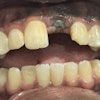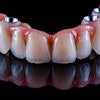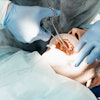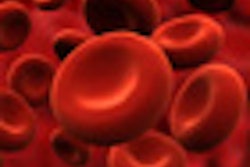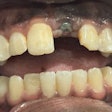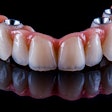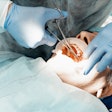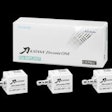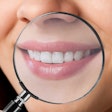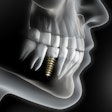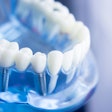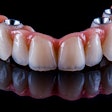
A recent histology study from Loma Linda University demonstrated the successful osseointegration of mini dental implants after three months. This success rate is not news to those of us who have been placing mini dental implants for many years, but for practitioners looking for data regarding the long-term efficacy of mini dental implants, this recent study offers support.
Given the aging demographics of our society and the ongoing demand for dentures, general practitioners can no longer postpone adoption of this evolution in treatment. Mini dental implants provide a treatment option that is both patient-friendly and an economic boost to the dental practice.
 Raymond Choi, DDS.
Raymond Choi, DDS.
I have been placing 3M ESPE MDI mini dental implants for more than 12 years and have seen firsthand how they can fill a gap in a practice's offerings, help a practice grow, and help serve patients better. Before I began offering mini implants for denture stabilization, I had been placing traditional-diameter implants for several years. While traditional implants remain the standard of care for denture stabilization and I continue to place them in my practice, the fact is that for many patients traditional implants are not an ideal treatment.
This can be due to several reasons, which vary by patient but can be divided into specific themes. First, as we know, traditional implant treatment can be very costly. For seniors living on fixed incomes, this factor alone can be enough to discourage them from traditional implants.
Second, bone levels are frequently a problem for older patients. Those who do not have adequate bone to support implants can choose to undergo bone graft treatment, but this adds expense and time to the treatment, not to mention sometimes painful recovery.
Finally, time itself is often an issue. Even patients who are able to afford traditional implants and who have adequate bone levels may not be willing to invest the time for the surgical placement of implants and the subsequent healing period.
Long-term data
For these reasons, mini dental implants provide an attractive alternative. When I meet with patients interested in denture stabilization options, I describe all the available options to them, beginning with traditional implants. I also discuss the possibilities of making new dentures, or relining existing ones, or, simplest of all, doing nothing.
But in many cases, when patients learn about mini dental implants, this is the option they find most appealing. The treatment is attractive to them because it is more affordable than traditional implants, and it also requires less bone and cases can typically be completed much faster.
Of course, it is important to discuss the available data with patients for any given treatment. In the case of mini dental implants, long-term studies are under way and 10-year data are expected soon. Currently, five- and six-year studies conducted by 3M ESPE show comparable success rates to traditional implants at 10 years. I am also able to tell patients about my personal experience performing this treatment successfully for more than 12 years.
The new histology data are summarized in 3M ESPE's technical data sheet for MDI mini dental implants. When educating patients about the osseointegration of these devices, I often take a humorous approach, asking, "How would bone cells recognize the size of an implant when the surface material is the same?" The evidence shows they do not -- and osseointegration takes place with mini implants in the same way as it does with traditional implants.
Expanding the practice
Beyond their appeal to the growing population of aging patients, mini implants should appeal to business-minded dentists as well. Very few treatments have the same potential for practice growth and can be implemented so quickly. In fact, for most dentists, it takes just one case to recoup the investment in training.
In my practice, adding this service in addition to traditional implants allowed me to treat patients who in the past would have declined traditional implants and not returned to my office. By offering an alternative, I am able to keep these patients in the practice and also grow through referrals from these very satisfied patients.
Dentists who are not currently offering any kind of implants should also take a close look at mini implants. The flapless procedure can be learned at a one-day seminar and implemented without a significant expense in new equipment.
With thousands of people turning 65 every day, and with this trend projected to continue for more than a decade, dentists must prepare themselves to cater to a new population of seniors. Implants are becoming a widely accepted treatment modality that patients are increasingly seeking out. Mini implants provide an attractive option for general dentists to respond proactively to this trend and help a large number of patients with an affordable, minimally invasive treatment.
Author disclosure: Dr. Choi is a 3M ESPE MDI mini dental implants seminar presenter.
Dr. Raymond Choi is an assistant clinical professor in the TMJ/Facial Pain Clinic at the University of Southern California and has a private general practice in Tustin, CA. He was one of the first dentists on the West Coast to place Sendax IMTEC mini dental implants for lower denture stabilization. He will be performing live patient mini implant placement and restoration and a cadaver hands-on workshop course on mini implants at the 2012 ADA Annual Session in San Francisco, October 18-20.
